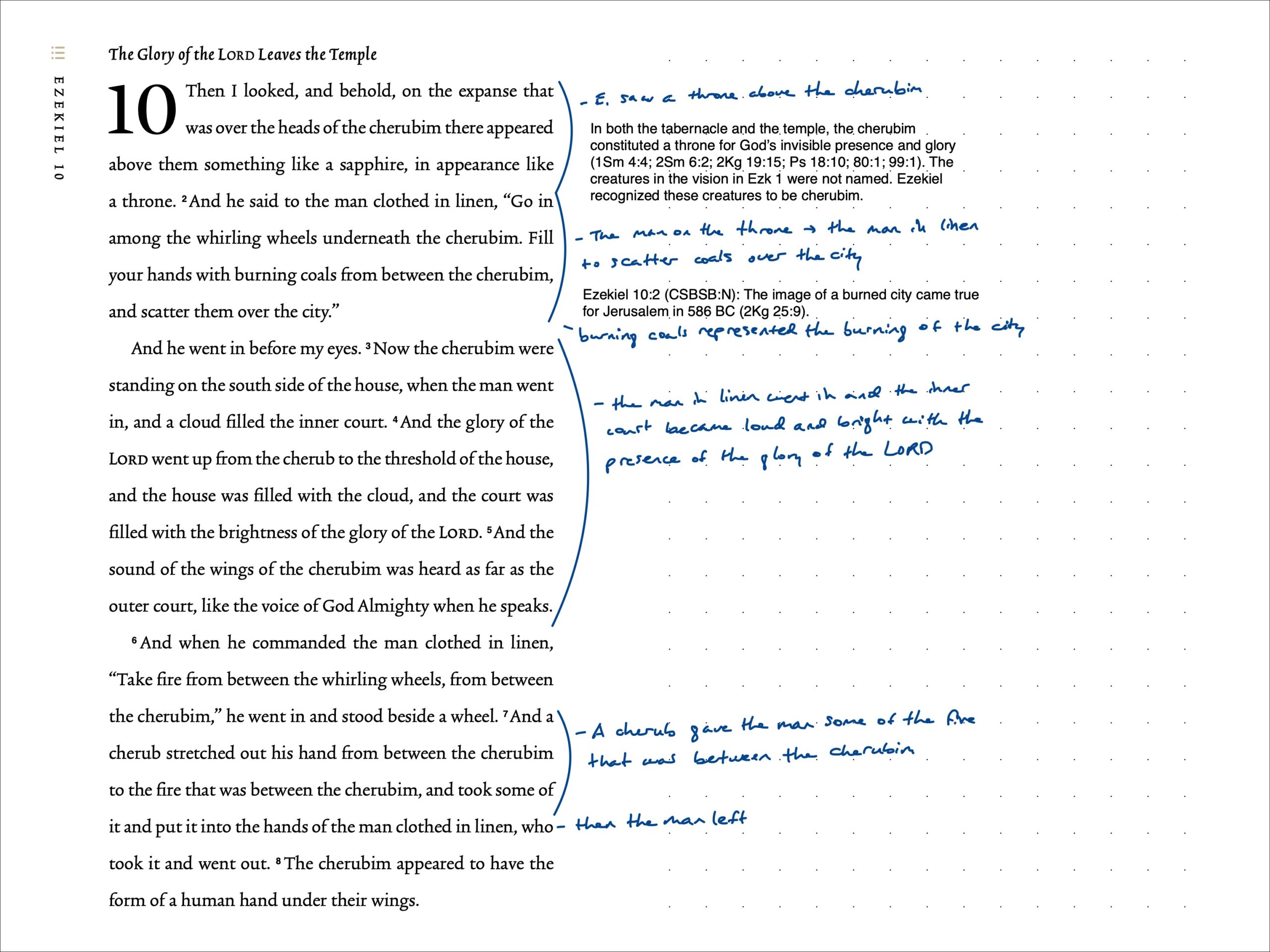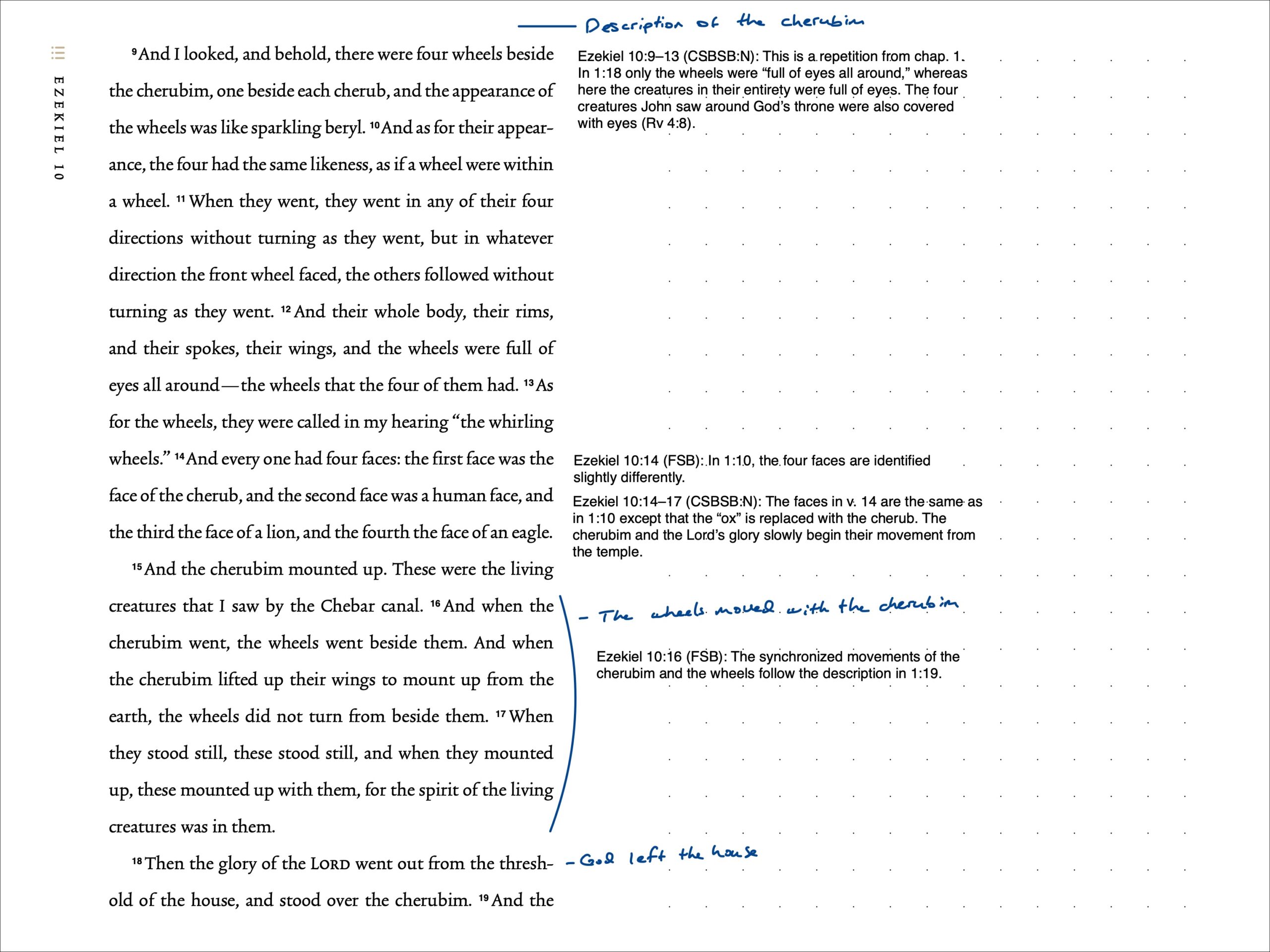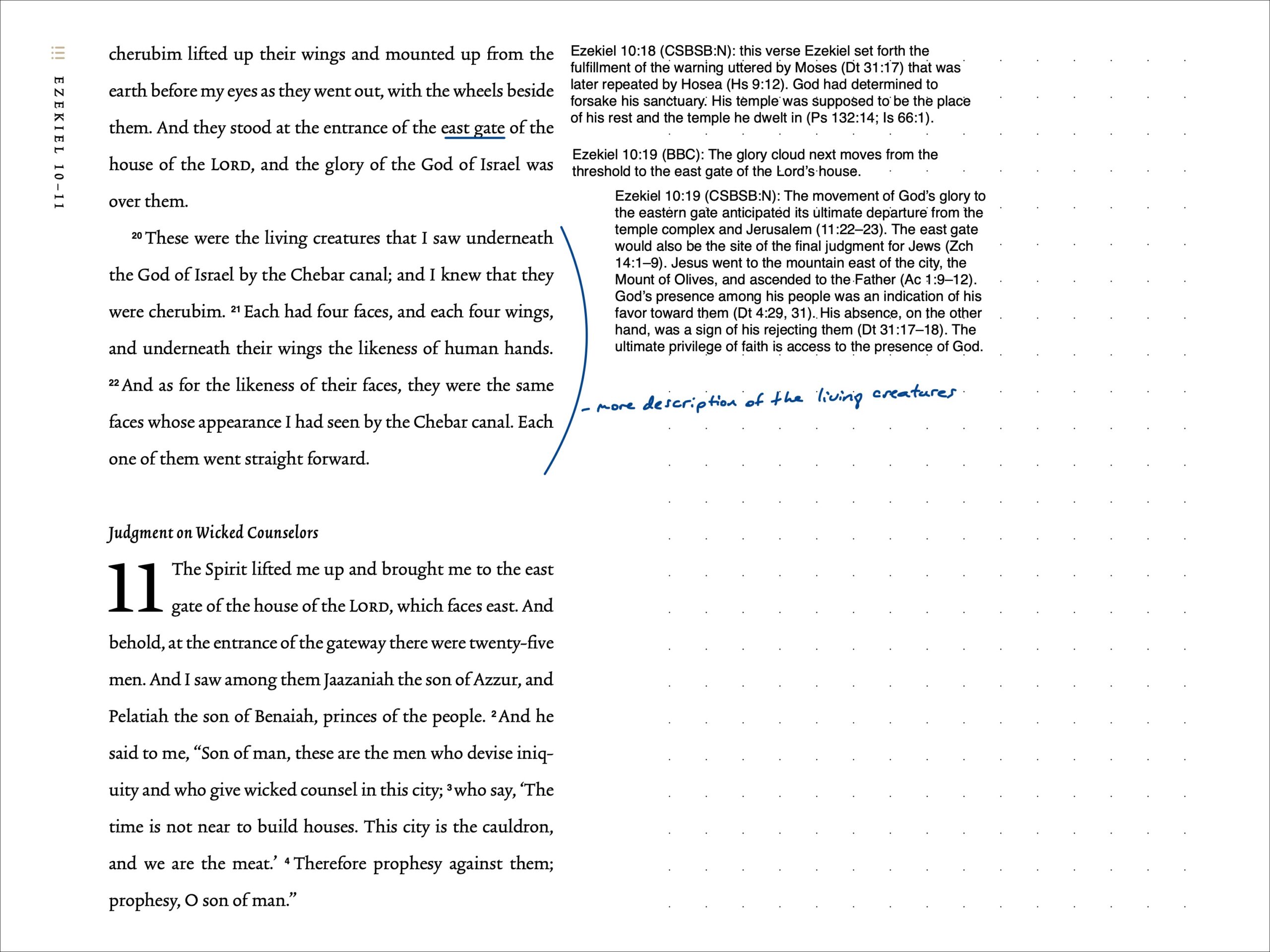| Date | Version | Reading Plan |
|---|---|---|
| @August 30, 2023 | ESV (2016) | ESV Prophets Plan 2023 |
Pericopes
- The Glory of the Lord Leaves the Temple
Notes
The chapter opens with a vision of Ezekiel of an expanse over the heads of the cherubim, “something like a sapphire, in appearance of a throne”. In both the tabernacle and temple, the cherubim constituted a throne for God’s invisible presence and glory (see 1 Sam. 4:4; 2 Sam. 6:2; 2 Kings 19:15). The creatures in Ezekiel’s vision in chapter 1 are not named but he recognized them to be cherubim.
In Ezek. 10:2-5, God tells the man in linen to fill his hands with burning coals from between the cherubim and “scatter them over the city.” The burning coals represented the burning of the city of Jerusalem. This came true in 586 B.C. (2 Kings 25:9). The man in linen then went into the house and the court became loud and bright with the presence of the glory of the LORD.
Ezek. 10:6-8 describes how the cherub put some of the fire between the cherubim into the hands of the man in linen, who then left. Fire is often associated with God’s judgment against the wicked (Gen. 19:24; Deut. 32:22). According to Ezekiel, the same fire from God that purified the mouth of Isaiah (Is 6:6) and brought destruction to Sodom and Gomorrah (Gn 19:24) would now purge the city of Jerusalem in judgment.
Ezek. 10:9-14 provides a description of the cherubim, a repetition of chapter 1 with some slight differences. In Ezek. 1:18, only the wheels were “full of eyes all around”, but here the creatures in their entirety had eyes all around. The four creatures John saw in Rev. 4:8 also had eyes all around. The faces described in Ezek. 10:14 are also depicted differently; the “ox” in Ezek. 1:10 was replaced with the cherub.
Ezek. 10:15-19 describe how the wheels moved with the cherub. The synchronized movement follows the description from Ezek. 1:19.
In Ezek. 10:18-19, the glory of the LORD “went out from the threshold of the house, and stood over the cherubim. This verse is the fulfillment of the warning spoken by Moses (Deut. 31:17) and later repeated by Hosea (Hosea 9:12). God had determined to forsake His sanctuary, a designated place of His rest and dwelling (Ps. 132:14; Isaiah 66:1). The ultimate privilege of faith is God’s presence, making His absence a sign of His rejection (Deut. 31:17).
The final verses (Ezek. 10:20-22) conclude the chapter with more description of the living creatures and their movement. This recap solidifies the identity of the creatures Ezekiel saw in chapter 1 and that they were the same as the cherubim described here.
Application
There is a good deal of imagery in this chapter; an expanse with the likeness of a throne, whirling wheels and cherubim. It all seems fairly bizarre to include from a modern Western perspective, but these visions of creatures and their movements were pointing to a terrifying reality that God was leaving the presence of His people.
I think about how so many of us take advantage of the fact that God is present among us. Even as Christians who know the truth, we can wane in our appreciation. We can too easily forget that, despite our sin, God remains with us and provided for us a means of reconciliation to Himself through the work of His Son. Our full understanding of this should stir up moment-by-moment praise, and yet we become fatigued in our gratitude. It is in these moments that we need to be reminded of the immanence and grace of our God; that for those whom He has called, He will never leave nor forsake.
Scripture Journal Notes
Commentaries & Resources Used
- ESV Study Bible. (Wheaton, IL: Crossway, 2008)
- Faithlife Study Bible (Lexham Press, 2016)
- Believer’s Bible Commentary (Thomas Nelson, 2016)
- CSB Study Bible Notes (Holman Bible Publishers, 2017)
- Matthew Henry’s Commentary on the Whole Bible (Guardian Press, 1976)
- The Bible: A Reader’s Guide (Sterling Publishing, 2011)
- The Infographic Bible (Zondervan, 2018)
- ESV Digital Scripture Journal (Crossway, 2019)


